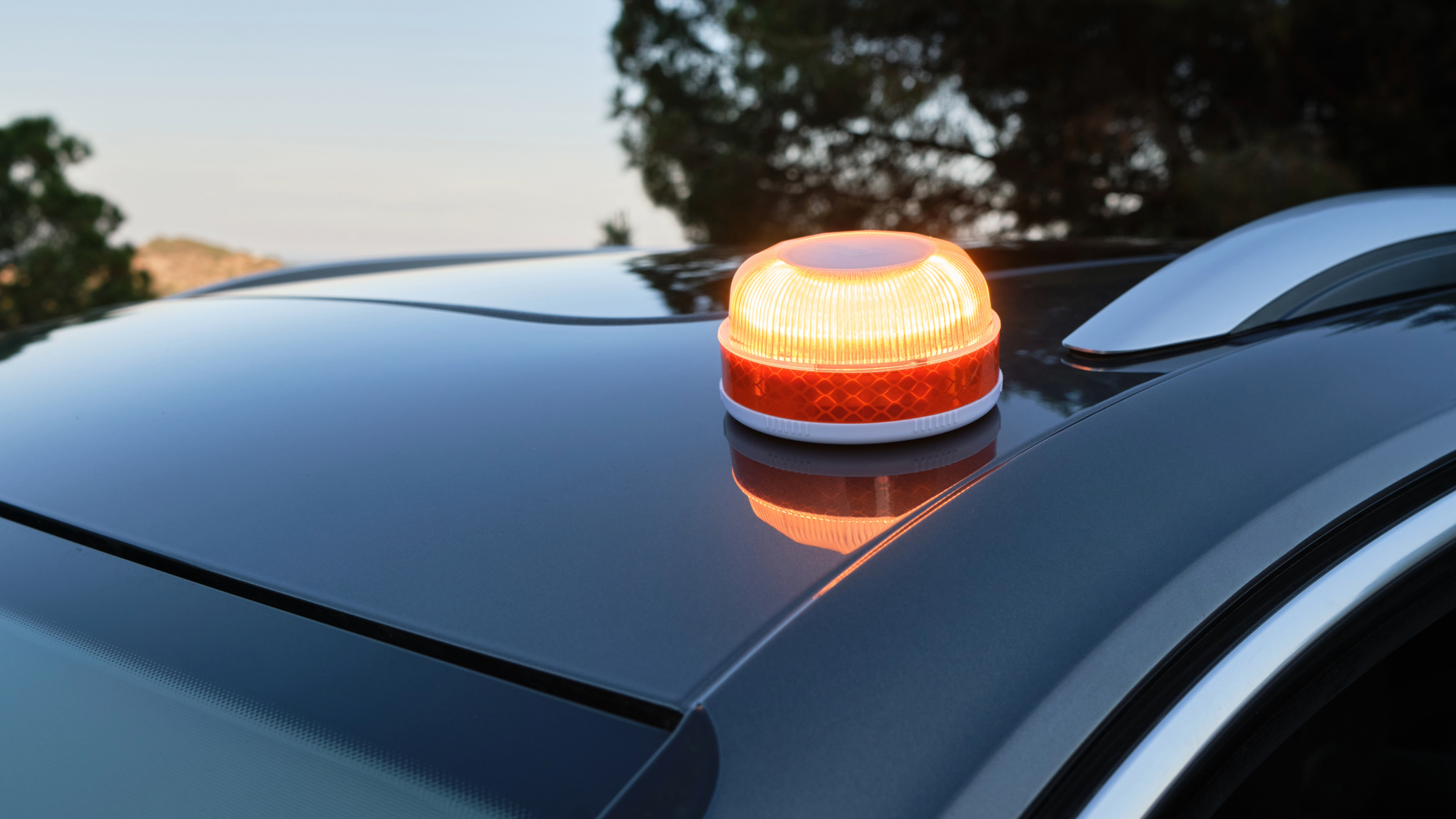What you should know about wintertime depression + emergency responders.
The Hollywood version of winter paints a blissful vision of drinking comforting hot cocoa, hosting a family dinner beside a fireplace and watching the snow gently fall. But the truth is, while there can be a lot of joy around the season, there can also be a lot of gloom, angst and sorrow.
Do you find yourself feeling extra exhausted in the wintertime from the physical and emotional toll of winter fires and holiday calls? Do you know someone who gets sad around the season because it reminds them of a loved one they've lost? Between feeling overwhelmed (or underwhelmed) by family commitments, the stress of spending too much money and frigid temperatures — it's no surprise that some people don't find this to be the most wonderful time of the year.
What are the wintertime blues?
An estimated 10-20% of Americans battle the winter blues — making it very common. People with winter blues typically feel gloomy, dislike the season and long for spring. This stress and anxiety is usually linked to holiday-related experiences (like over-spending or missing a loved one), the weather or lack of sun exposure. Similarly, those who become more isolated because of winter weather can experience a feeling known as "cabin fever," which can make people feel intense irritability, sadness or restlessness.
What is Seasonal Affective Disorder (SAD)?
If you're experiencing more than gloominess, you could be one of the half a million people in the U.S. suffering from a more serious, and possibly debilitating, condition known as Seasonal Affective Disorder.
According to the National Institute of Mental Health, Seasonal Affective Disorder, also known as SAD, is a type of major depression that comes with a particular season and happens at least two years in a row. While SAD can occur in the summer, it's much more common during the wintertime — typically effecting people in the late fall and early winter.
What are the signs of SAD?
People with SAD experience the same symptoms of major depression, including:
- Feeling depressed the majority of the day, most days
- A lack of interest
- Feeling hopeless, worthless or agitated
- Low energy levels or feeling sluggish
- Having problems sleeping
- Changes in weight or appetite
- Thoughts of death or suicide
In addition to the typical signs of depression, people with wintertime-specific SAD can experience "hibernating" like symptoms, including:
- Low energy
- Excessive sleeping or sleepiness
- Overeating, craving carbohydrates and weight gain
- Social withdraw
What factors put someone at increased risk for the winter blues and SAD?
- Geography. People who live farther away from the equator lose a substantial amount of daylight in the winter which could impact their mood. While not enough studies have been done to confirm the effects of reduced sun exposure concerning SAD, less sunlight is linked to the over-production of melatonin which can make people feel tired and have less energy. Additionally, there have been studies that show that imbalances in brain chemicals like serotonin, which maintains our mood balance, can be linked to a lack of sun exposure.
- Gender (possibly). Women are four times more likely to be diagnosed with SAD than men. But it's also important to note that there is a gender bias with the treatment of psychological disorders, and doctors are more likely to diagnose women with depression than men — even if they have the same symptoms.
- Age. Younger adults and teenagers, specifically people between the ages of 18 and 30, are more likely to experience symptoms of SAD.
- Family history. People with a family history of any type of depression may be at an increased risk for SAD.
- Having depression. The symptoms of depression can worsen for people during the season.
What this means for firefighters & EMTs:
Mental and behavioral health are major concerns for the fire and emergency medical services community — and for good reason.
- 1 in 5 firefighters will struggle with behavioral health issues, including depression, at some point in their careers. And firefighters are 3x more likely to die by suicide than in the line of duty.
- 37% of EMS professionals in a recent survey reported contemplating suicide (nearly 10 times the rate of average American adults) and 6.6% have attempted suicide.
When you consider that having depression puts a person at an increased risk for SAD, and that some responders see even less sunlight because of their schedules, as well as the tendency for holidays to bring up memories of lost loved ones (and responders witness loss more than your average person) — it becomes clear that you may want to specifically watch out for your brothers and sisters this season.
Listen to Dan Eggleston, 2018-2019 President of the International Association of Fire Chiefs & Chief of the Albemarle County Fire Rescue, discuss the landscape mental health in small-town fire departments.
3 Ways to help treat and prevent the wintertime blues and SAD:
1. Seek professional help.
If you know someone who is experiencing the symptoms of SAD — it's time to seek professional help. Treatments for SAD include:
- Light therapy. For most people, light therapy is as effective as an antidepressant for treating SAD. This entails sitting near a light box (which is 100x brighter than your usual indoor light) for 30 minutes a day while you read, work or relax.
- Medication. A doctor may prescribe an antidepressant for SAD.
- Psychotherapy. Traditional therapy can help people who are impacted by depression.
- Vitamin D. While this isn't a treatment by itself, people with SAD have been found to have low levels of vitamin D.
2. End the stigma within your ESO.
92% of firefighters view seeking treatment as a sign of weakness and 56% of EMS personnel who feel that they're not supported by their peers or managers concerning mental wellness have contemplated suicide. Seeking help with any issue starts with having a conversation and ending the stigma in your organization.
3. Develop a wellness program.
Only 27% of fire departments have a basic health and wellness program in place! Not only are these programs helpful for reducing your crews' risk of cardiac events, cancer and obesity — it could help improve the mental health of your members.
-
Studies show that exercise can work quickly to elevate depression. While the effects are temporary, a brisk walk could provide relief for hours. One study found that those who get regular vigorous exercise were 25% less likely to develop anxiety or depression.
-
Researchers have found that a healthy diet (such as the Mediterranean diet that includes veggies, fruits, unprocessed whole grains, seeds, nuts and lean proteins) was associated with a significantly lower risk of developing depressive symptoms.
-
High-stress events can lead to depression. Implementing a stress management program that includes education, therapy or shared experiences can help your members better cope in their daily lives.
PS: If you can't see the value in creating a wellness program, consider this — one study found that the average amount of money that departments saved on apparatus repairs when they've implemented a wellness/fitness initiative is $563,334 a year!
How does your crew stay busy and foster community during the wintertime? Let us know in the comments below!
DISCLAIMER
The information contained in this blog post is intended for educational purposes only and is not intended to replace expert advice in connection with the topics presented. Glatfelter specifically disclaims any liability for any act or omission by any person or entity in connection with the preparation, use or implementation of plans, principles, concepts or information contained in this publication.
Glatfelter does not make any representation or warranty, expressed or implied, with respect to the results obtained by the use, adherence or implementation of the material contained in this publication. The implementation of the plans, principles, concepts or materials contained in this publication is not a guarantee that you will achieve a certain desired result. It is strongly recommended that you consult with a professional advisor, architect or other expert prior to the implementation of plans, principles, concepts or materials contained in this publication.
Related posts
We asked 10 members of our VFIS Team to name one auto-related risk that they believe is underdiscussed in fire and EMS agencies. Here’s what they said.
Most volunteer fire departments rely heavily on POVs, but there are inherent risks you should know.
Establish a Emergency Vehicle Operations Program that includes driver/operator requirements to help ensure your vehicles are in the right hands.











Submit a Comment